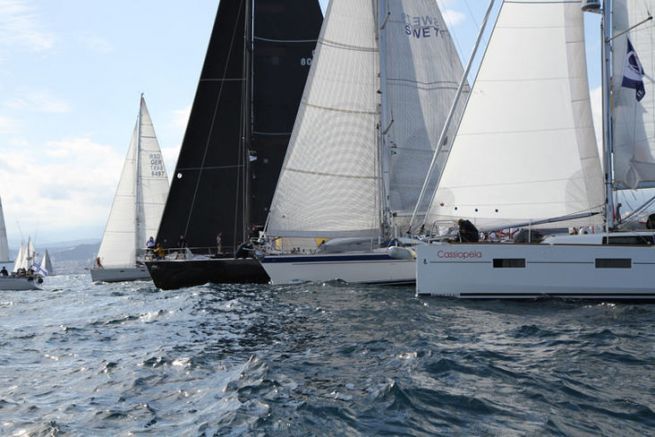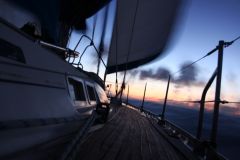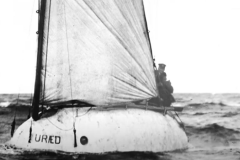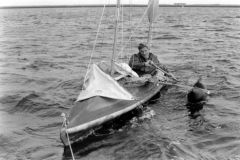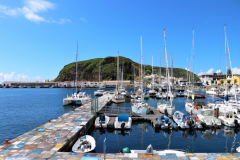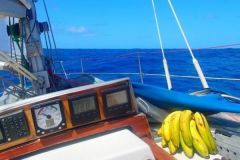Crossing the Atlantic: we all dream of it, or almost all of us, without necessarily daring to take the plunge. Rallys, like the ARC, whose start we followed in Las Palmas, can help you take the plunge. As a flotilla, you will be much safer in case of serious problems. And you'll make friends for the rest of your life... and maybe even for life!
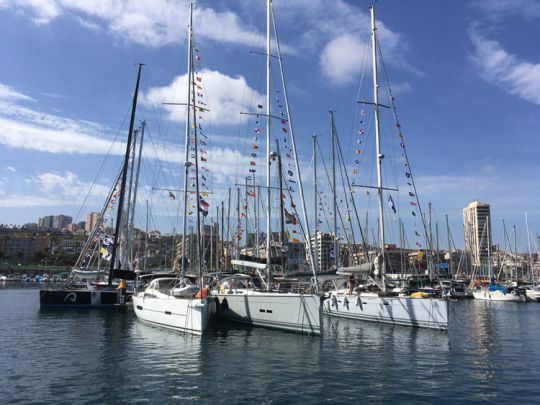
Forced to split the fleet
This rally, of which this is the 32nd th edition, is posing as the undisputed leader: faced with the ARC, many organisers - RIDS and Atlantic/Carribean Odyssey - are setting up (or going up, for Jimmy Cornell) similar projects but only bring together around fifteen sailing boats. The ARC, for its part, is a victim of its own success! Due to a lack of space in the Las Palmas marina, the organisers had to resort to organising two separate events?
The first, ARC +, had 69 participants - compared to 54 last year, who left Las Palmas on 5 November, heading for Mindelo, Cape Verde, for a new departure to Saint Lucia on 19 November, at the same time as the ARC "historic canal".
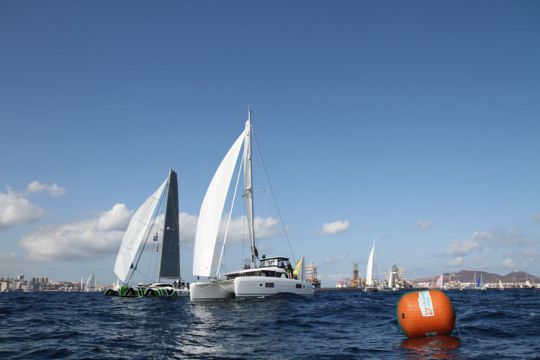
186 yachts and 3 categories
The RCAF 2017 brought together 186 sailboats of 27 different nationalities, divided into several categories. The 27 pure racers are not allowed to use the engine. The others - 129 monohulls and 30 multihulls, including a magnificent trimaran, a Rapido - can. However, a clever formula makes it possible to classify the "cruisers", who are obliged to communicate - without cheating please! - their daily engine time.
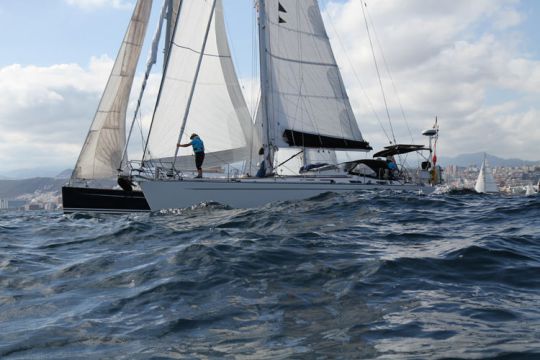
The bulk of the troops are English (57 ships), Germans (27 units) and Norwegians - there are 18 of them. The French are well represented this year with 16 participants, compared to only 7 last year.
A strict organization on security
The CRA requires extensive security equipment. Each boat must be able to give its position every day and before the start, the organisers review all the boats. Beacons, self-inflating vests, lifelines: the safety post is screened. Constraints, of course, but an incredible atmosphere provided by 1,008 sailors of 40 different nationalities in a marina. Between gargantuan bunkering and last-minute tinkering, the show is worth living.
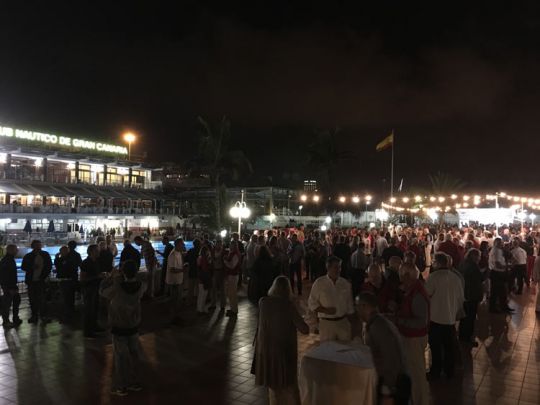
Children of all nationalities
What about the kids? There are 20 of them, walking or cycling in bunches and inviting each other to sleep on their boats, even if they don't speak the same language! The organisers, between big open-air parties and fireworks, even offer them activities such as Optimist regattas.
Let's face it: if you're looking for solitude and tranquility, this rally is not for you. Just make do with the less convenient and free anchorage, located just north of the harbour. But for the others, eager to share the adventure that a transatlantic race represents, the services offered are particularly interesting: rallying event in Lagos (Portugal), the possibility of mooring at the Las Palmas marina - most boats arrive at the beginning of October and some even in August -, return rally to Europe or round-the-world tour, the ARC can meet all the requirements. Ideal for those who wish to sail without getting into a headache.
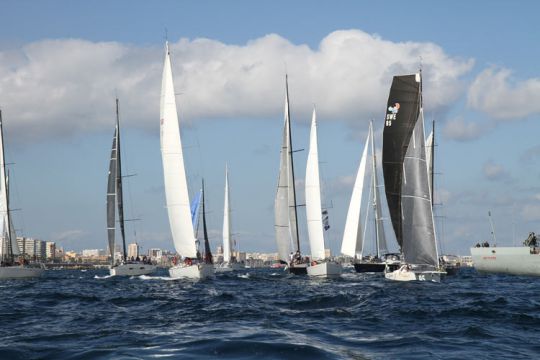
Question budget
Let's talk big money. On average, a CRA registration costs 1,500 euros. These significant costs are partly amortized by the more advantageous port rates. But the main argument for the rallies is safety. The organisers, in daily contact with all the skippers, are able to call in a nearby sailing boat in the event of a shipwreck, dismasting or rudder breakage.
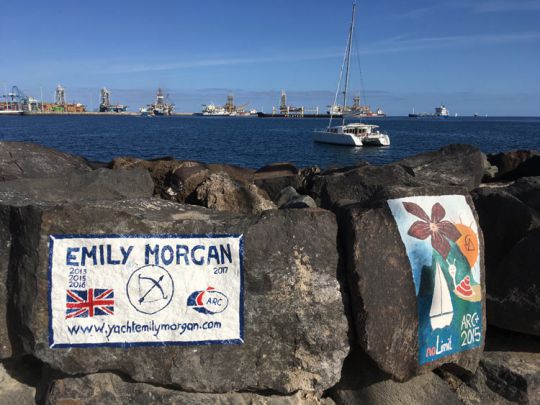
A quiet start
The impressive fleet, reduced by only four yachts that withdrew, started as planned on 19 November 2017. In spite of a slightly timid trade wind set at 10 knots, the boats under spinnaker quickly scattered over the horizon. The presence of a long ridge of high pressure, right on the route, meant that the skippers had to make a choice without delay, as they were unable to get stuck: the Northern route, which is faster but certainly muscular - winds of 45 knots expected for a few hours, and upwind -, or the very Southern route, which is much calmer, but... much longer!
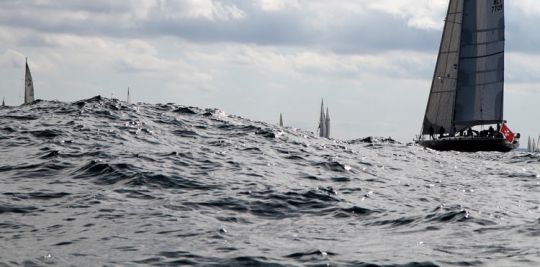
CRA by the numbers
- 18 to 21 days: that's the average time it will take to cover the 2,700 miles of the course.
- 190 yachts are registered. 4 did not start due to technical problems.
- 1,008 crew members, including 20 children. 18% are women, including 8 skippers.
- 9.14 m is the size of the smallest sailboat, the Pogo 30, Avel Biz led by Pierre-Yves Luxey. Both have already participated in the ARC in 2013.
- The largest sailing yacht is Farfalla, a 31.7-metre luxury charter yacht.
- The average length of vessels is 15.29 m, compared with 14.30 m in 2008.
- 12 years old: this is the average age of the fleet's sailboats - it was 11 years old in 2016.
- 16 units are Bénéteau. The Vendée shipyard is the most represented.
- 30 multihulls are registered, compared with 15 in 2008 and 20 last year. The most represented are the Lagoons, with 10 units.
